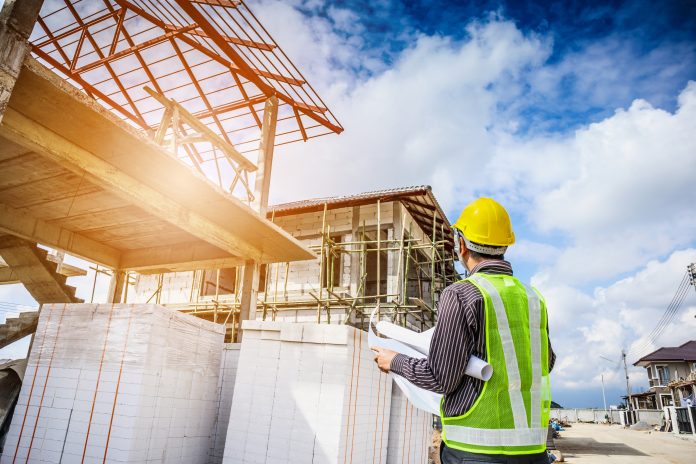The introduction of the UK’s new Part L building regulations this week has been met with a mixture of trepidation and frustration from the industry. Here, Phil Kelly, director, head of sustainability, buildings, Ramboll, explores
This major update, as part of the response to a public consultation which also incorporates the Future Homes and Buildings Standards, presents a number of significant challenges. Not least, the schedule of information released by the government has not facilitated the timely completion of the approved software needed for the calculations required by Part L, a core tenet of the new regulations which provides a roadmap to lower carbon building stock.
Ensuring building regulations tackle the net zero challenge head on has never been more urgent. The figures are stark: the built environment contributes 37% of global energy-related carbon emissions, and the construction industry as a whole is responsible for around 40% of global resource demand every year.
To make a dent in these figures, we need clear direction from governments to incentivise industry engagement at the rate needed. Yet, this new update to the UK’s regulations risks falling short of adequately addressing the climate and resource impact of the built environment.
What is the significance of the new Part L building regulations?
Most notably, the changes to Part L – which now sets out both energy efficiency and carbon emissions requirements – do not go far enough. The government expects it to bring about a 27-31% reduction in carbon emissions for new builds. This is nothing new – adesired average emissions reduction has been included in the previous three major updates to Part L – however, some sectors will find the regulations easier to implement than others.
Indeed, for existing buildings, Part L could prove to be a real failure. When statistics show that 70-80% of the buildings that will be standing in 2050 are already standing today, it is imperative that we understand how to decarbonise our existing buildings stock.
Additionally, stakeholders are faced with the major limiting factor that government-approved versions of third-party calculation software are now required to validate compliance with these targets. Their absence will present lengthy delays for Part L’s implementation.
Typically, project and design teams need months of various design iterations before planning or building control applications can even be made, as a crucial part of the design process to ensure compliance. Given just the first part of the software needed has only been released in the past few weeks, design teams have been relying on beta versions for existing projects, leaving clients at risk of legal non-compliance.
The future of EPCs
There were also hopes that the updated regulations would provide clearer guidance on achieving Energy Performance Certificate (EPC) targets. After all, what was previously deemed exceptional energy performance is now just a hygiene factor, and developers are keen to ensure their plans for improving their buildings’ EPCs are watertight. The compliance windows are fast-approaching: in the private rented sector, the minimum required EPC is expected to be a C-rating by 2027, rising to a B-rating by 2030. It is a significant uplift from the current minimum standard of an E-rating.
Project and design teams working on new builds will now need to confirm that their designs meet these Minimum Energy Efficiency Standards, as well as national and local planning policy. However, given the current slow roll-out of the necessary government-approved software, there will be a lag in pushing ahead with these targets.
Part Z: Next on the net zero agenda
Part Z, which had its first reading in the House of Commons earlier this year, is next on the agenda. This legislation would ensure there is an embodied carbon assessment on all projects and that embodied carbon is capped, making it more challenging to demolish and rebuild properties.
This final point is essential if the government is to continue with their policy of providing VAT relief on new builds. Currently, developers are charged 20% VAT on refurbishment and nothing on new projects, encouraging demolition and resulting carbon emissions. Projects like the high-profile demolition of the Marks & Spencer store on London’s Oxford Street claim they will make up for the embodied carbon debt they will gain in their build process through reduced operational emissions.
However, while carbon emissions are significant during the construction process, they are frequently comparatively lower in a building’s operational life, especially the proportion up to 2050; the UK’s Net Zero Carbon deadline. This skew between debt and repayment is only exacerbated by the slow release of operational emissions over time, in parallel with the National Grid’s continuing decarbonisation. In contrast, by building for disassembly, 60-70% of a project’s embodied carbon can be saved.
A net positive future
Simply paying back carbon debts does not go far enough in addressing the built environment’s role in the climate emergency. Instead, we need to be working towards the concept of ‘net positive’ and ‘regenerative’ buildings which give more than they consume. This approach goes beyond net zero towards a more holistic idea of decarbonisation which addresses the pressing issue of existing buildings, rather than focusing solely on new builds.
For now, at least, the updated building regulations will likely return discussions around the performance gap to pole position in the building agenda in the short term, but this should not be at the expense of the climate debate. To urgently tackle the impact of the built environment on our climate and resources, the industry needs to be provided with the tools to implement the necessary design standards at pace.














